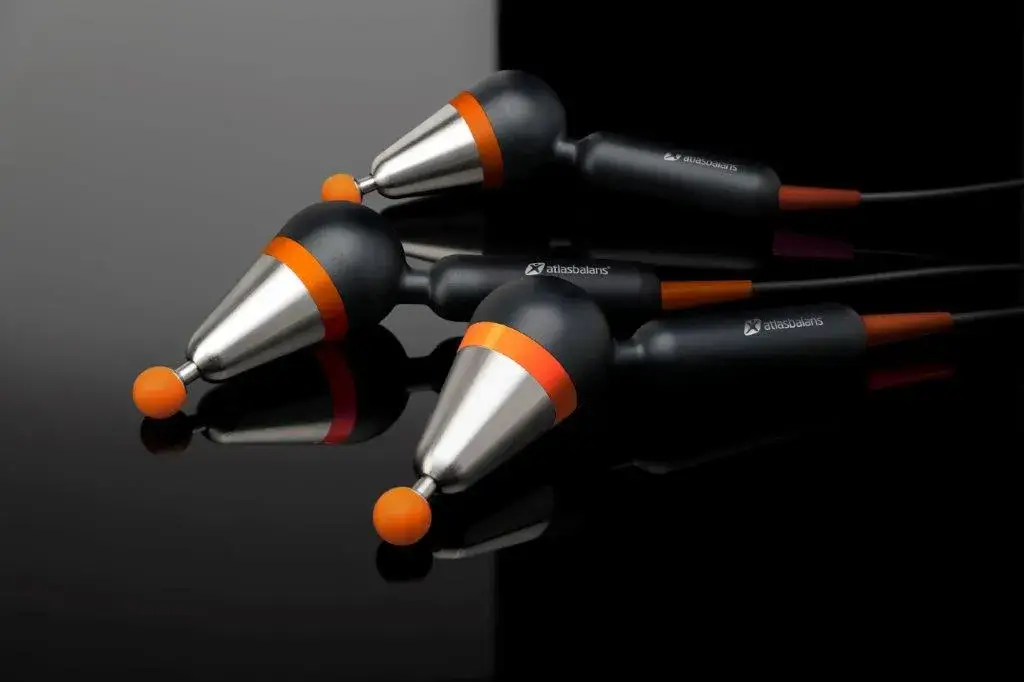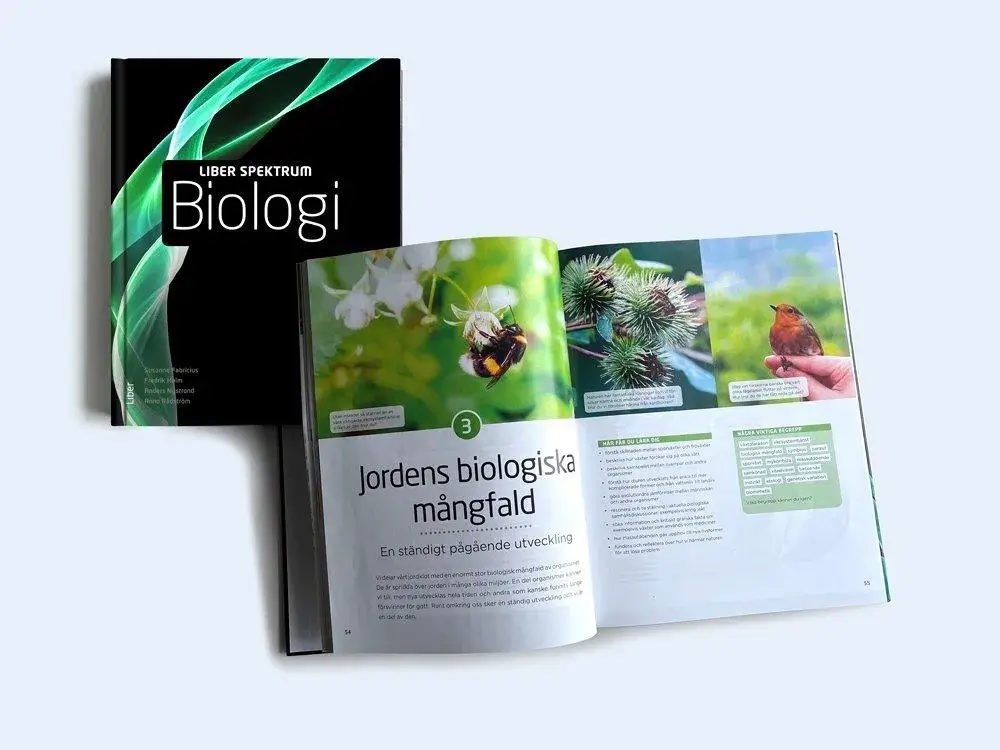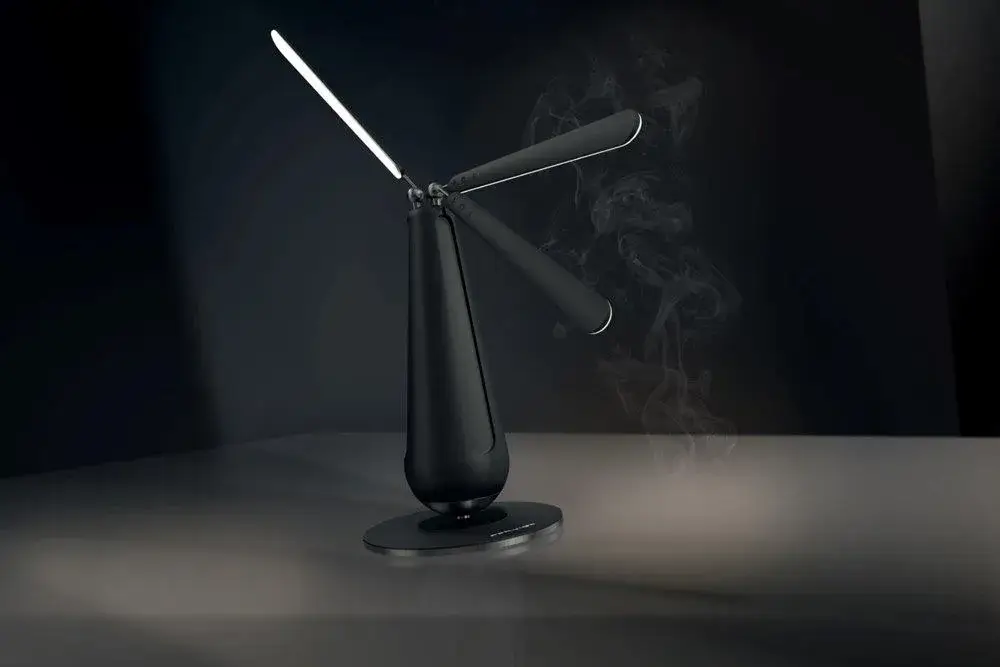Nikolaus and Cecilia Frank of Frank Etc., a Sweden-based design studio with countless projects carried out for more than 180 international clients and winners of more than 60 international design awards, disclose their secrets of evergreen inspiration and Good Design Award successes.

Nikolaus Frank, head designer and founder, designs products and develops new product ideas for current development and production, but also for future products, making use of new, emerging and future technologies. He has designed transport, lighting, electrical appliances, telecom products and musical instruments, working with international design groups and development teams in UK, North America, and Asia. He has previously been VP/Head of Industrial Design at Ericsson Mobile Communication, Division Consumer Products, where he initiated a new design centre and a new design line for the company’s products. He has taught as Senior Lecturer in Industrial Design at Konstfack.
You must have your own driving force, not becoming a servant by doing simply what is asked from you
Cecilia Frank creates information design: through visual identities, printed publications, user interfaces, book design, texts and stories. She has created numerous identity programs, both for public projects, such as new residential areas, projects within the City of Stockholm, and for many different companies, focussing on visual strategy and brand building. Cecilia continuously works with book design projects, mainly in education, for the publishing industry, and also with writing, storytelling, text editing and project management. She graduated from Konstfack, University College of Arts, Crafts and Design in Stockholm, with a Masters Degree in Graphic Design & Illustration, in 1990. Academic studies in Film History and Media Communication and work for several design studios in UK.

Never be afraid of challenges, and always challenge yourself to come up with new and better ideas
GDN: Frank Etc. is an award-winning studio with many Good Design certified products. What is a good design for you, Nikolaus, as the head designer of Frank Etc.?
Nikolaus/Cecilia: In Frank Etc., we work in close cooperation, Cecilia from a graphic design and narrative building point of view, and Nikolaus from a product design and innovation point of view. Every design project has its own specific conditions. Clients are different, as well as dynamics of teams, scale, and budget.
While there is seldom only one right answer to a project brief, as a designer, you must strive to optimize what you have, to create the best result possible given the project’s circumstances. A good design must be idea driven. Having a strong idea when carrying the project through, helps you to steer away from unnecessary compromises. A well-designed product needs to be relevant, and have a long life-span.

A good design must be idea-driven
GDN: Which projects of Frank Etc., would you and Cecilia consider the landmarks of Frank Etc.?
Nikolaus/Cecilia: Among projects to be mentioned are the Tobii Eyetracking glasses, which were designed as an analyzing tool for human behavior, the Atlasbalans M2 treatment tool for body balancing, which uses center of gravity to make it like a powerful extension of the human hand, the Liber Spektrum series of science books for secondary school, which has been successful and much appreciated by teachers and students alike, the recognizable red Clavia NordLead synthesizer, which was designed many years ago, but is still highly visible in later versions across stages globally.
Starting with many award-winning conceptual products in the early 1990s, a lot of our focus has been on innovation projects, making use of new and emerging technologies. These may not have reached the market as products, but have been part of a development dialog, and have earned confidence with the clients in their strategic forward planning. We work independently, with a humanistic approach, always starting from how a product could benefit the user. One of the projects where we took this to a higher degree was the Networked Society project for Ericsson, where we continuously developed conceptual design in new technologies for many years, and which was used in the company’s strategic and visionary work globally.

Today, the design process goes all the way from initial idea to production or print
GDN: Which project would you describe to our readers that you faced the biggest challenge with?
Nikolaus/Cecilia: Starting in our professions in the 1980s, the biggest challenge we have faced so far was when we converted from an analog to a digital way of working. What then happened was that the whole design process moved us much closer to engineering and production, and as a consequence, the design we delivered also became more detailed.
Today, the design process goes all the way from initial idea to production or print. That paradigm shift was a challenge. Although we can sometimes miss the craft aspects of our professions, it has given us a greater control over our projects.

A well-designed product needs to be relevant, and have a long life-span
GDN: What is the code of conduct of Frank Etc., as far as sustainable design is concerned?
Nikolaus/Cecilia: We have started with ourselves and our experience. Our sustainable design thinking can only be as extensive as we are capable of implementing in our own lives.
We constantly aim to limit our own ecological footprint. By working with this ourselves, it becomes easier to motivate this thinking for our clients. Also, we always strive to design products with long lifespans.

You are there to make a positive and significant change
GDN: Do technological innovations and new inventions always impact product design in a positive way in your opinion?
Nikolaus/Cecilia: No, not always. But it can challenge conventional design solutions and that cannot be overlooked. We are driven by curiosity and fascination with what the future can bring.

GDN: Industrial and product design in Europe, do you consider that it bears differences when juxtaposed to the American status quo?
Nikolaus/Cecilia: This is not an easy question to answer. The European design scene is extremely multifaceted. In our experience, while the American design may have certain characteristics, it is also deeply influenced by European design, and vice versa.
It is difficult to compare them, since they are so interlinked, and related to one another. There is a greater dynamic and contrast between the Asian and the Euro/American design scenes, which has perhaps not been so widely discussed.
Starting in our professions in the 1980s, the biggest challenge we faced was a digital way of working

GDN: What or who do you think of when working on a new design?
What about you, Cecilia?
Nikolaus/Cecilia: The user is always our focus. We both have a genuine interest in people, society, and interactions. We study people from different contexts and learn about their realities. As we work, we often create fictional users based on our experiences and research, and ask ourselves what their needs and behaviors are, and what they would benefit from.
It is always interesting to see how our products actually work in real life, letting us verify that our design has had the effect that we intended. We are passionate about our work and enjoy working with design as much now as we did when we started.

GDN: What advice would you both have to give to young product designers? What is something you wished you knew sooner if there is any?
Nikolaus/Cecilia: What we have experienced throughout our careers, is that you should be open-minded and take on projects without being too selective. By working with different kinds of projects for different kinds of clients, you train your ability and get experience. Insights from one kind of project can be surprisingly beneficial in a completely different project.
With experience, you will gain respect from your clients, and confidence to know that you can carry out many types of design work. You must have your own driving force, not becoming a servant by doing simply what is asked from you. You are there to make a positive and significant change. Never be afraid of challenges, and always challenge yourself to come up with new and better ideas.
The user is always our focus. We study people from different contexts and learn about their realities.

*Photos and videos courtesy of Frank Etc.












